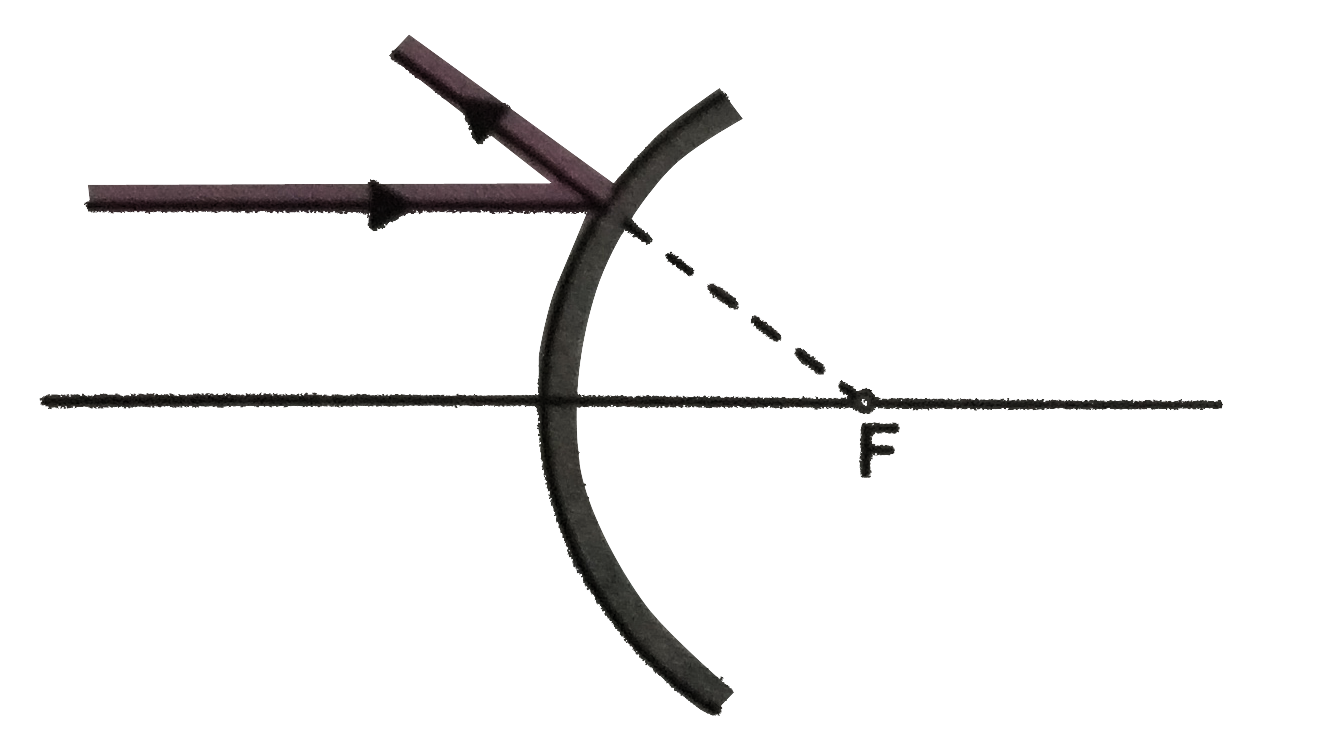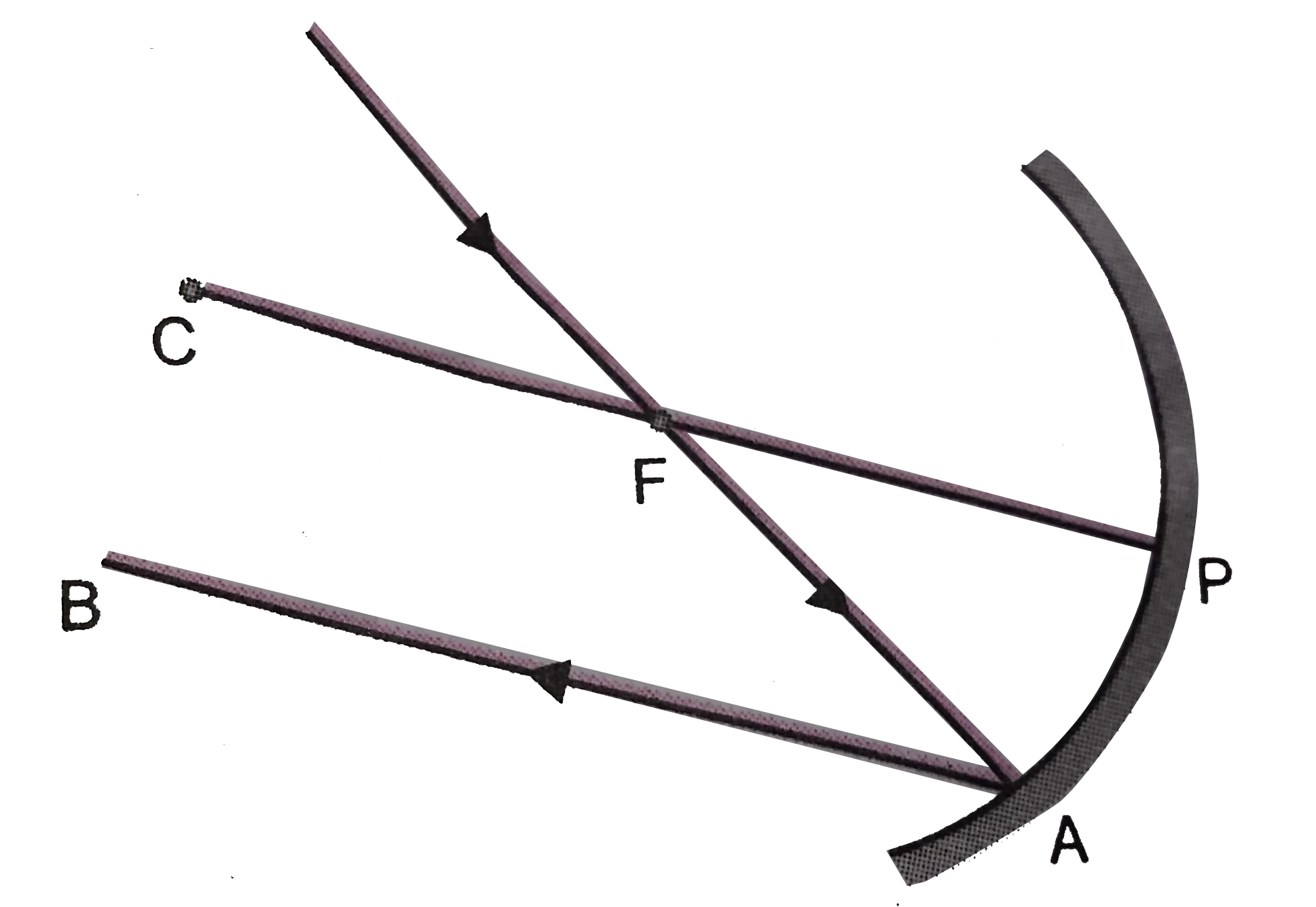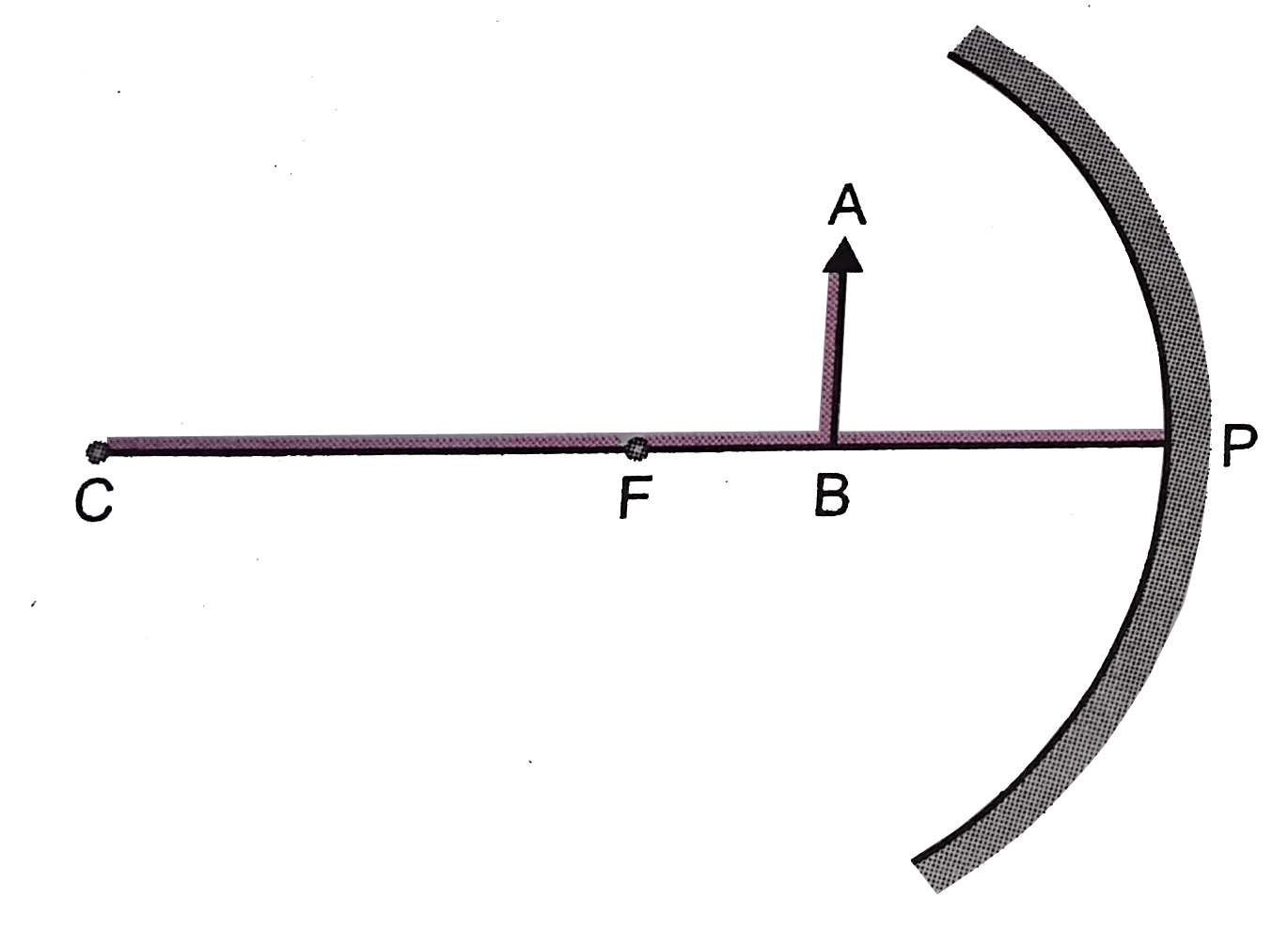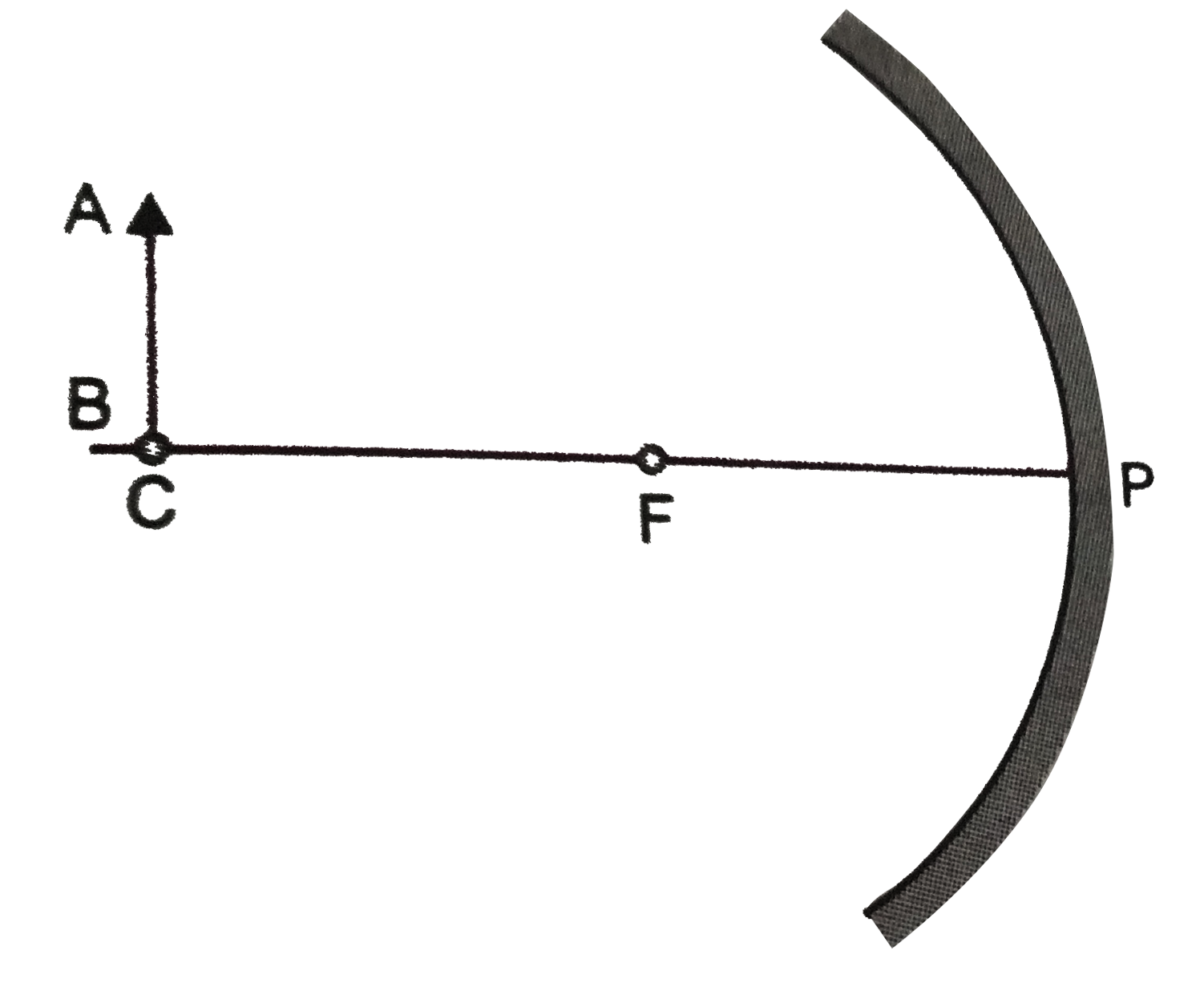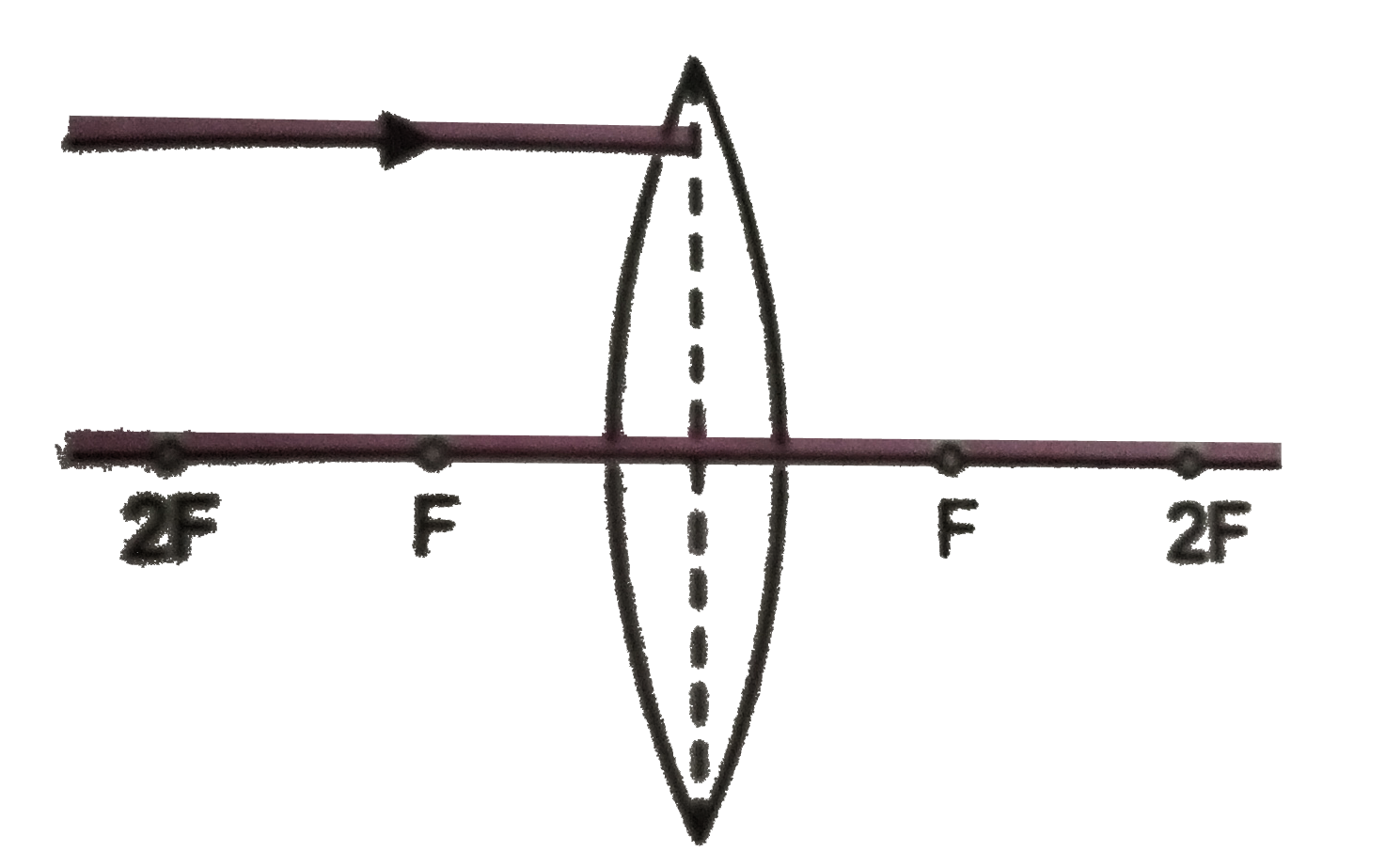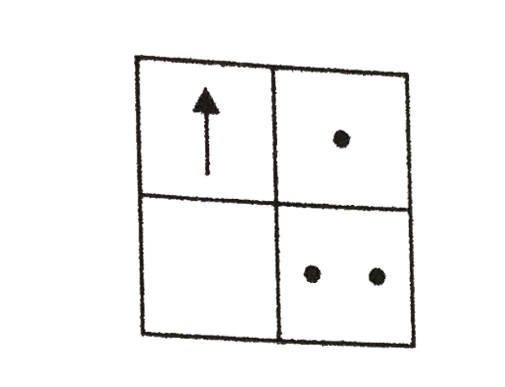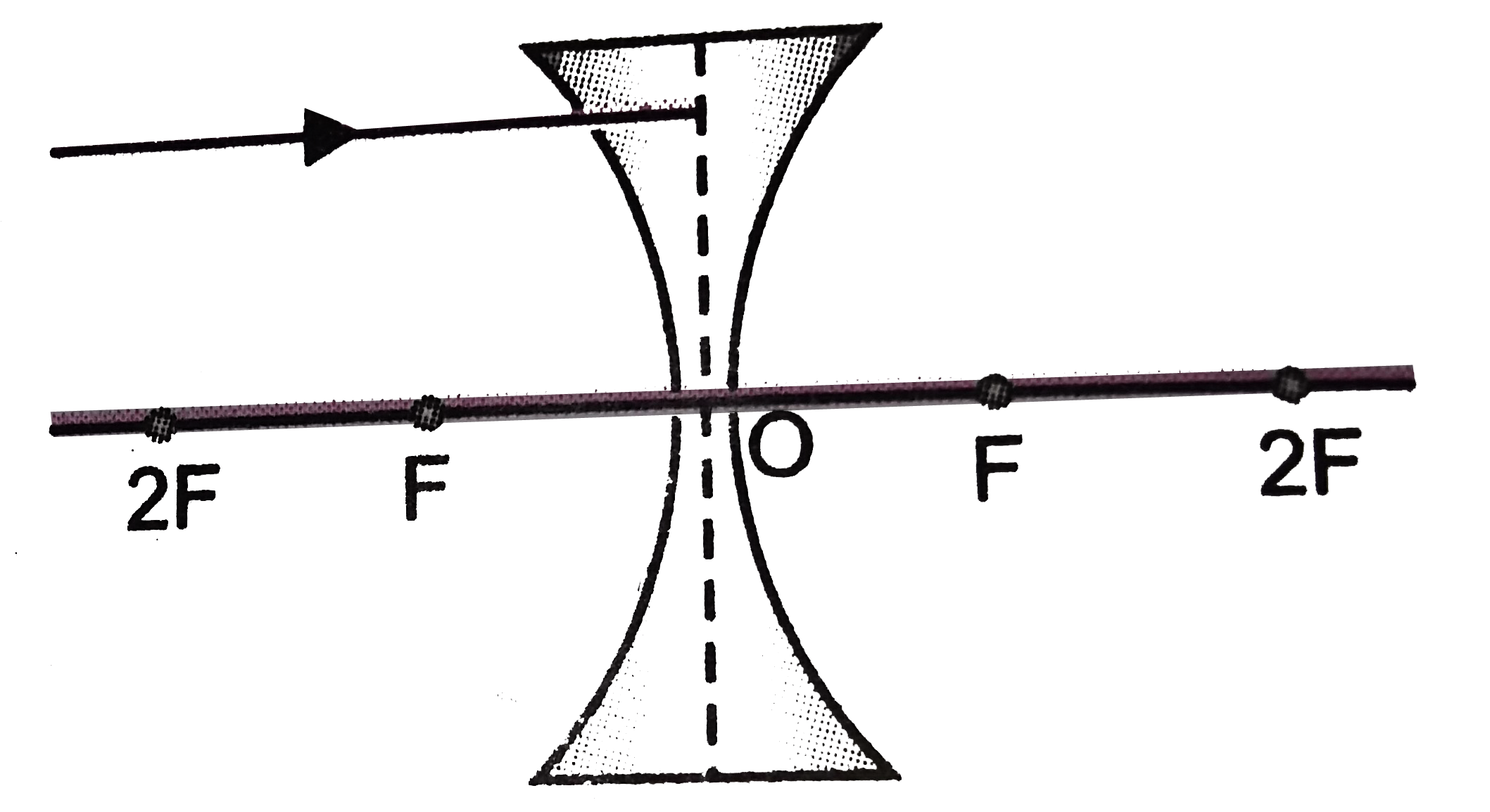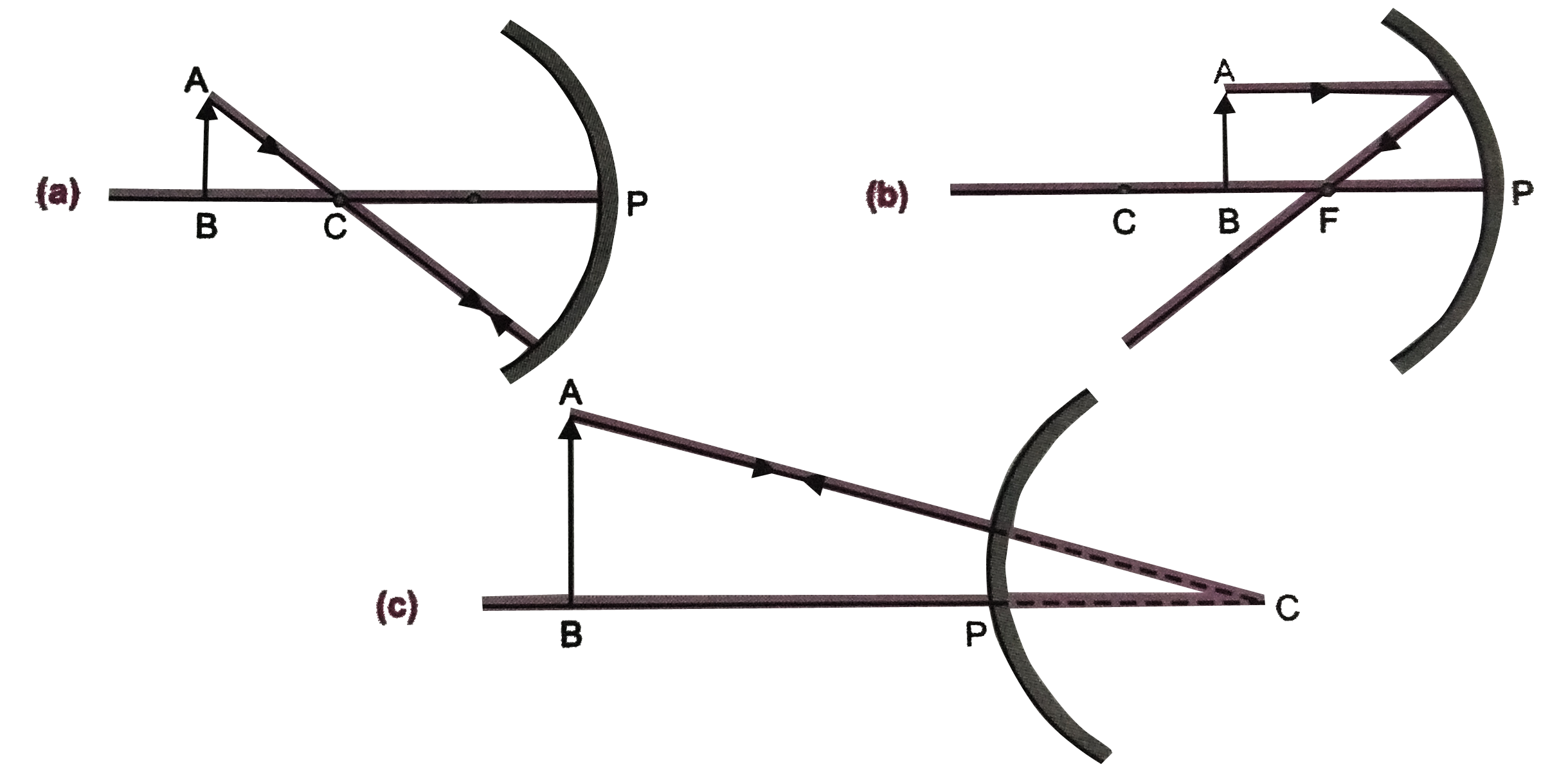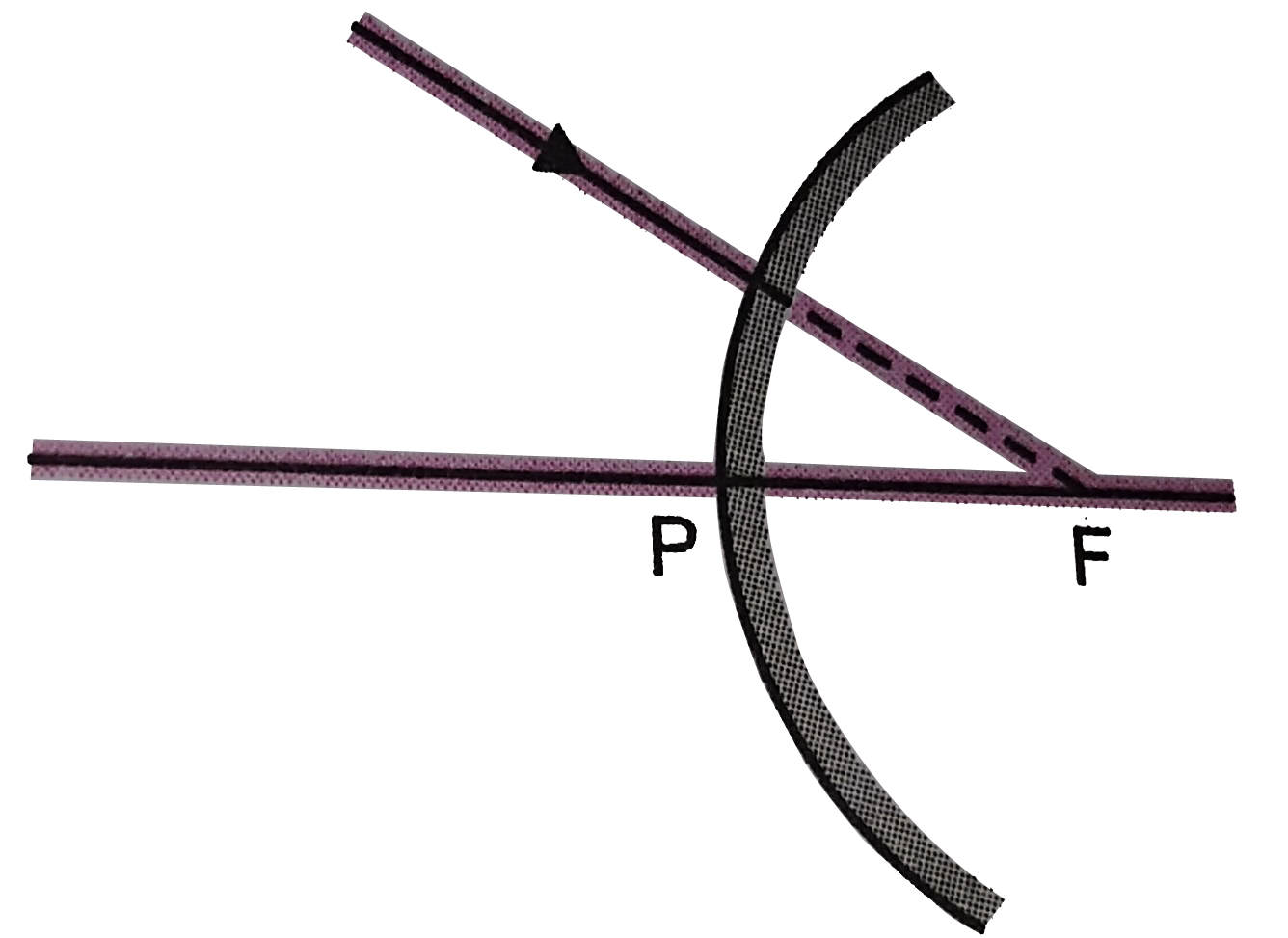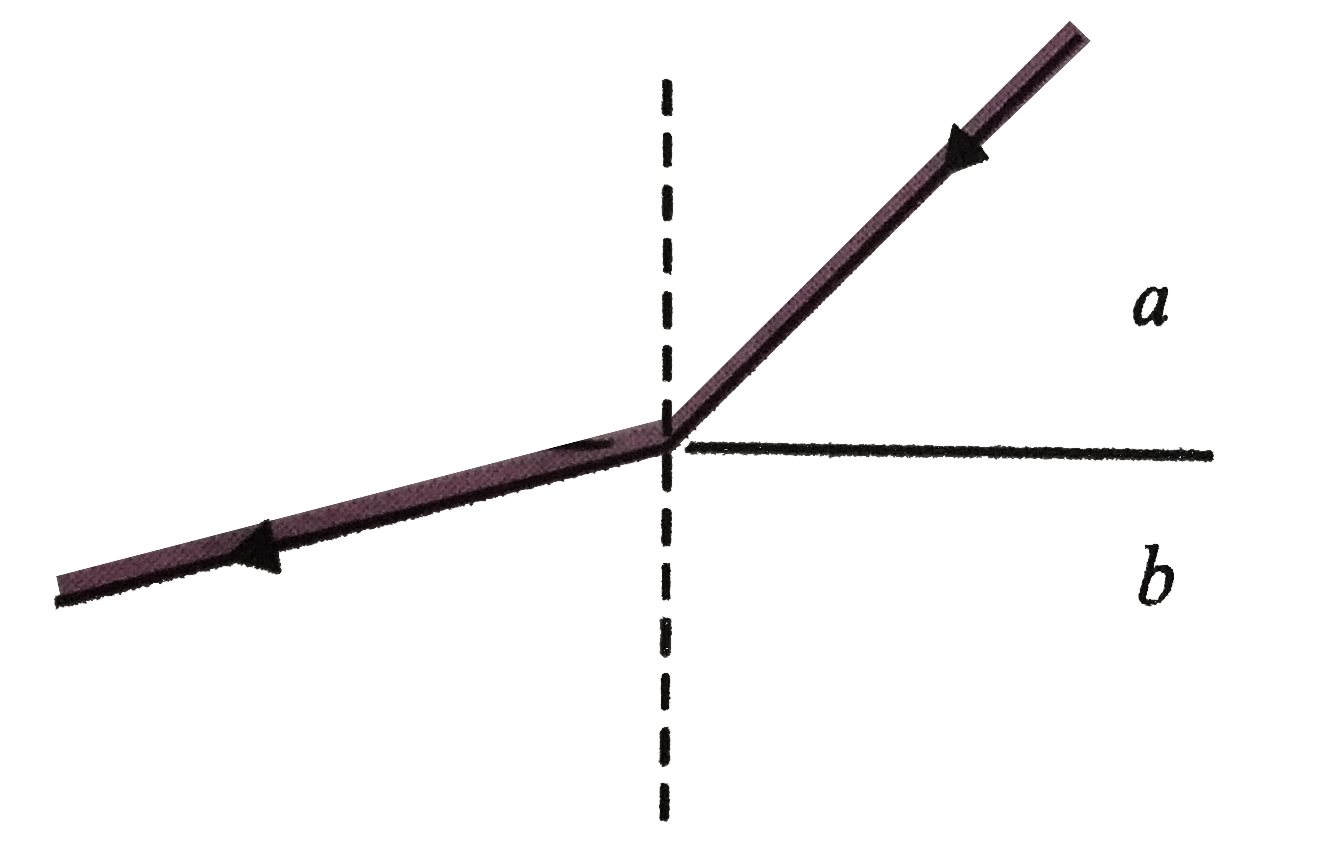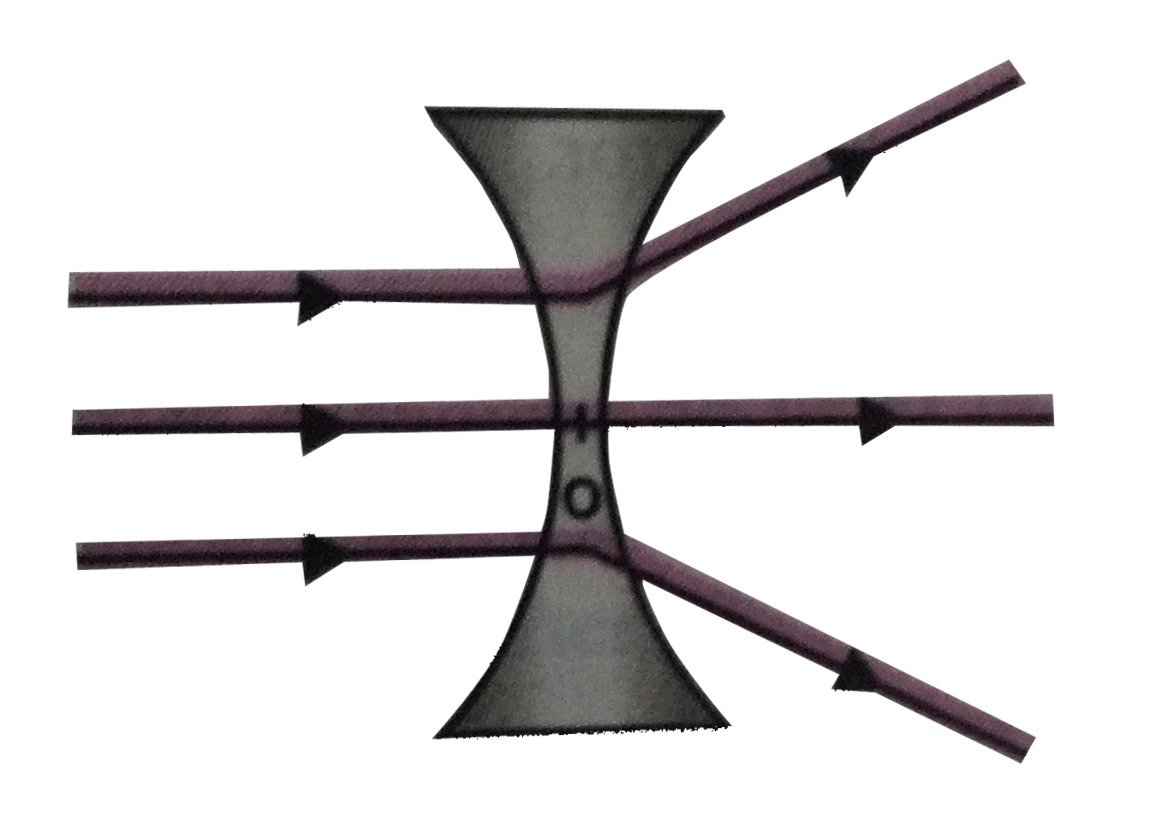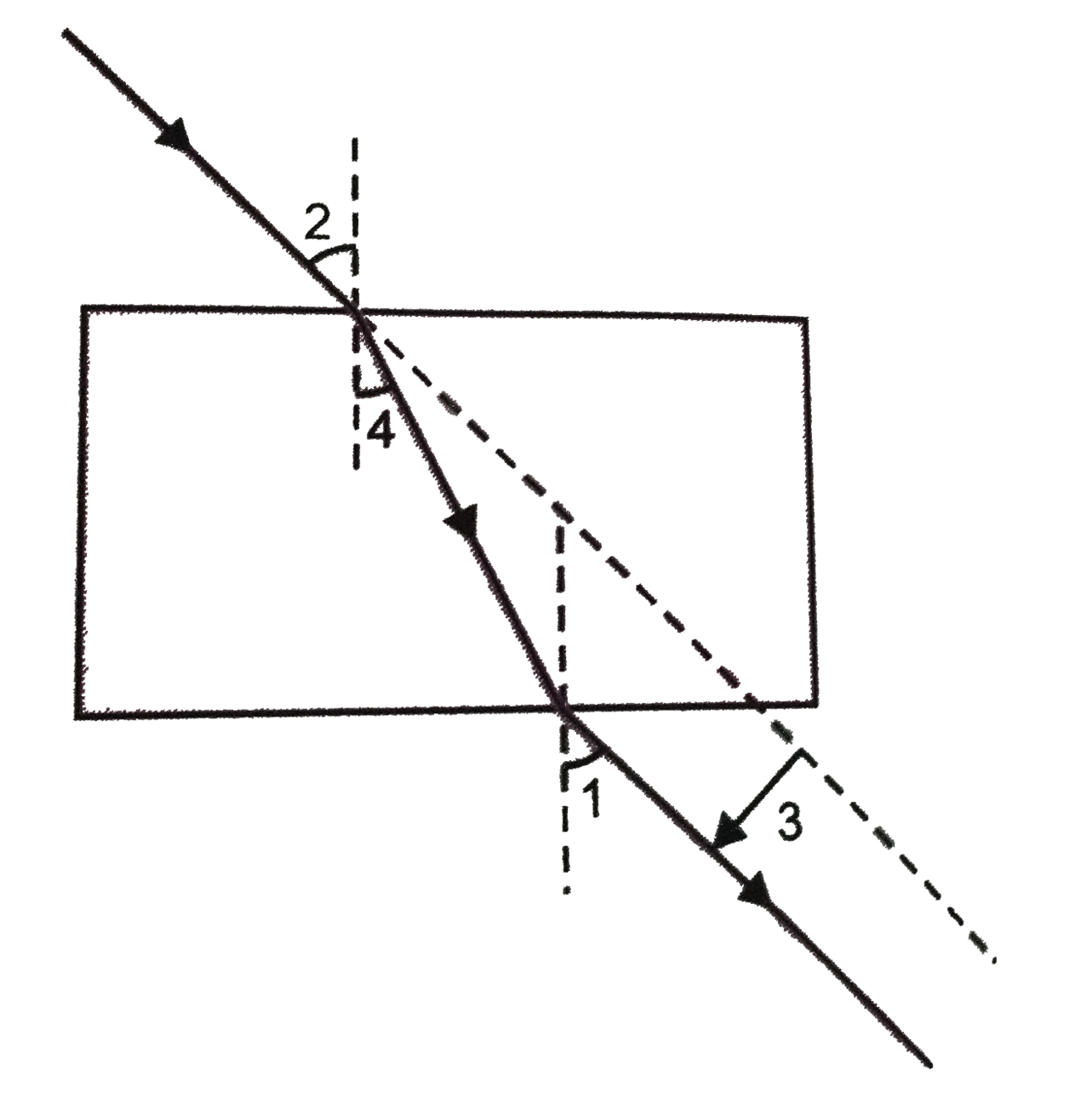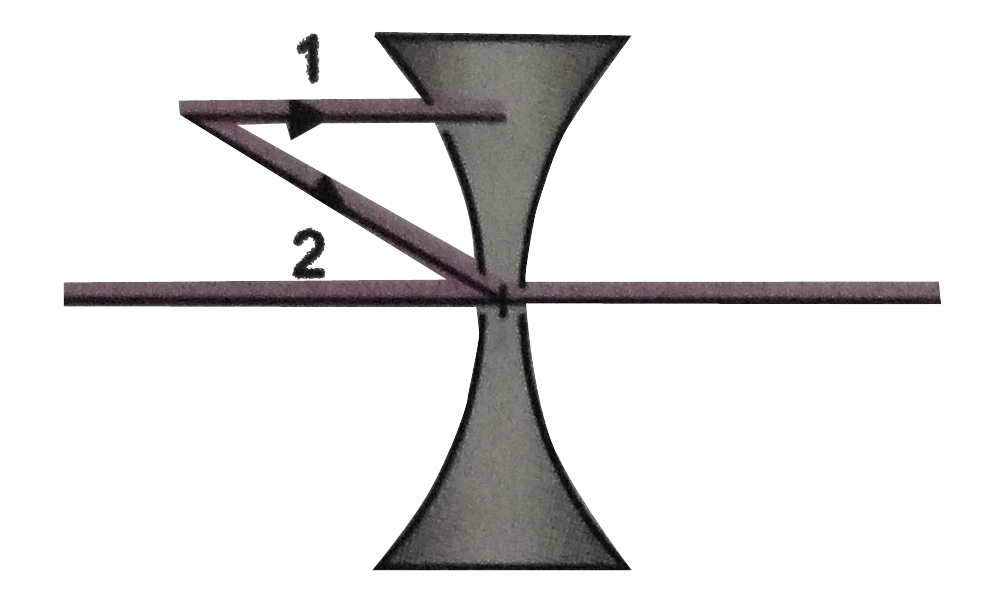NCERT EXERCISE from PRADEEP PHYSICS (HINGLISH) REFLECTION AND REFRACTION for Class 10
| Class 10 | PHYSICS |
| Chapter | REFLECTION AND REFRACTION |
| PRADEEP PHYSICS (HINGLISH) | NCERT EXERCISE |
| Medium | English |
| Academic Year | 2023-2024 |
Question 3
(a) To construct a ray diagram, we use two rays which are so chosen that it is easy to know their directions after reflection from the mirror. List two such rays and state the path of these rays after reflection in case of concave mirrors. Use these two rays and draw ray diagram to locate the image of an object placed between pole and focus of a concave mirror.
(b) A concave mirror produces three times magnified image on a screen. If the object is placed 20 cm in front of the mirror, how far is the screen from the object? View SolutionQuestion 9
(a) If the image formed by a mirror for all positions of the object placed in front of it is always diminished, erect and virtural, state the type of the mirror and also draw a ray diagram to justify your answer. Write one use such mirrors are put to and why?
(b) Define the radius of curvature of spherical mirrors. Find the nature and focal length of a spherical mirror, whose radius of curvature is + 24 cm.View SolutionQuestion 10
The image of a candle flame placed at a distance of 30 cm from a mirror is formed on a screen placed in front of the mirror at a distance of 60 cm from its pole. What is the nature of the mirror ? Find its focal length. If the height of the flame is 2.4 cm, find the height of its image. State whether the image formed is erect or inverted. View SolutionQuestion 11
When a concave mirror is placed facing the sun, the sun's rays converge to a point 10 cm from the mirror. Now if you place a 2 cm long candle flame 20 cm away on the principal axis of the mirror, where would you place a screen to obtain the image of the candle? What would be the size of the image? Draw a ray diagram to justify your answer.View SolutionQuestion 17
A student very cautiously traces the path of a ray through a glass slab for different values of the angle of incidence (∠i). He then measures the corresponding values of the angle of refraction (∠r) and the angle of emergence (∠e) for every value of the angle of incidence. On analysing these measurements of angles, his conclusion would be View SolutionQuestion 22
Rohit focussed the image of a candle flame on a white screen using a convex lens. He noted position of candle =26.0cm, position of convex lens =50.0cm and position of screen =74.0cm.
(i) What is focal length of convex lens?
(ii) Where will the image be formed if he shifts the candle towards the lens at a position of 38 cm ?
(iii) Draw a ray diagram to show the formation of image in (ii) above.View SolutionQuestion 24
If the image formed by a lens for all positions of an object placed in front of it is always erect and diminished, what is the nature of this lens ? Draw a ray diagram to justify your answer. If the numerical value of power of this lens is 10 D, what is its focal length in cartesian system ?View SolutionQuestion 45
We wish to obtain an erect image of an object, using a concave mirror of focal length 15 cm. What should be the range of distance of the object from the mirror? What is the nature of the image? Is the image larger or smaller than the object? Draw a ray diagram to show the image formation in this case.View SolutionQuestion 56
Identify the device used as spherical mirror or lens in following cases, when the image formed is virtual and erect in each case.
(a) Object is placed between device and its focus, image formed is enlarged and behind it.
(b) Object is placed between the focus and device, image formed is enlarged and on the same side as that of the object.
(c ) Object is placed between infinity and device, image formed is diminished and between focus and optical centre on the same side as that of the object.
(d) Object is placed between infinity and device, image formed is diminished and between pole and focus, behind it.View SolutionQuestion 62
Sudha finds out that the sharp image of the window pane of her science laboratory is formed at a distance of 15cm from the lens. She now tries to focus the building visible to her outside the window instead of the window pane without disturbing the lens. In which direction will she move the screen to obtain a sharp image of the building ? What is the approximate focal length of this lens ?View SolutionQuestion 66
Draw ray diagrams showing the image formation by a concave mirror when an object is placed
(a) between pole and focus of the mirror , (b) between focus and centre of curvature of the mirror
(c ) at centre of curvature of the mirror , (d) a little beyond centre of curvature of the mirror
(e) at infinityView SolutionQuestion 67
Draw ray diagrams showing the image formation by a convex lens when an object is placed
(a) between optical centre and focus of the lens
(b) between focus and twice the focal length of the lens
( c) at twice the focal length of the lens
(d) at infinity , (e) at the focus of the lensView SolutionQuestion 71
The image of a candle flame formed by a lens is obtained on a screen placed on the other side of the lens. If the image is three times the size of the flame and the distance between lens and image is 80cm, at what distance should the candle be placed from the lens ? What is the nature of the image at a distance of 80cm from the lens ?View SolutionQuestion 74
A student focussed the image of a candle flame on a white screen using a convex lens. He noted down the position of the candle, screen and the lens as under
Position of candle =12.0cm
Position of convex lens =50.0cm
Position of the screen =88.0cm
(i) What is the focal length of the convex lens ?
(ii) Where will the image be formed if he shifts the candle towards the lens at a position of 31.0cm.
(iii) What will be the nature of the image formed if he further shifts the candle towards the lens ?
(iv) Draw a ray diagram to show the formation of the image in case (iii) as said above.View SolutionQuestion 78
Draw ray diagrams showing the image formation by a concave mirror when an object is placed
(a) between pole and focus of the mirror , (b) between focus and centre of curvature of the mirror
(c ) at centre of curvature of the mirror , (d) a little beyond centre of curvature of the mirror
(e) at infinityView SolutionQuestion 83
Three students A, B and C focussed a distant building on a screen with help of a concave mirror. To determine focal length of the concave mirror they measured the distances as given below:
Student A : From mirror to the screen , Student B : From building to the screen
Student C : From building to the mirror
Who measured the focal length correctly : View SolutionQuestion 135
(i) Rohit claims to have obtained an image twice the size of the object with a concave lens. Is he correct? Give reason for your answer.
(ii) Where should an object be placed in case of a convex lens to form an image of same size as of the object? Show with the help of ray diagram, the position and nature of image formed?
(iii) With the help of ray diagram, illustrate the change in position, size and nature of image formed if convex lens in case of (ii) is replaced by a concave lens of same focal length. View SolutionQuestion 164
Explain briefly the following day to day events:
(a) A swimming pool appears shallower than what it actually is.
(b) A convex lens can be used as a magnifier, but a concave lens cannot be.
( c) A convex mirror is used as a rear view mirror by the drivers of motor vehicles.
(d) A concave mirror is used by ENT specialists.
(e) A convex mirror is used as a refleactor in street lamps.View SolutionQuestion 168
Draw ray diagrams to represent the nature, position and relative size of the lens for the object placed:
a) at 2F1,
b) between F1 and the optical center O of the lens.
Which of the above two cases shows the use of convex lens as a magnifying glass? Give reasons for your choice. View SolutionQuestion 199
A student focuses the image of a candle flame, placed at about 2 m from a convex lens of focal length 10 cm, on a screen. After that, he moves gradually the flame towards the lens and each time its image on the screen.
(a) In which direction does he move the lens to focus the flame on the screen?
(b) What happens to the size of the image of the flame formed on the screen ?
(c ) What difference is seen in the intensity (brightnees) of the image of the flame on the screen ?
(d) What is seen on the when the flame is very close (at about 5 cm) to the lens ?View SolutionQuestion 213
A student focuses the image of a candle flame, placed at about 2 m from a convex lens of focal length 10 cm, on a screen. After that, he moves gradually the flame towards the lens and each time its image on the screen.
(a) In which direction does he move the lens to focus the flame on the screen?
(b) What happens to the size of the image of the flame formed on the screen ?
(c ) What difference is seen in the intensity (brightnees) of the image of the flame on the screen ?
(d) What is seen on the when the flame is very close (at about 5 cm) to the lens ?View SolutionQuestion 237
(a) State the relation between object distance, image distance and focal length of a spherical mirror.
(b) Draw a ray diagram to show the image formed by a concave mirror when an object is placed between pole and focus of the mirror.
(c ) A concave mirror of focal length 15 cm forms an image of an object kept at a distance of 10 cm from the mirror. Find the position, nature and size of the image formed by it.View SolutionQuestion 254
In an experiment with a rectangular glass slab, for an angle of incidence of 60∘ in air, angle of refraction is measured to be r1. When the glass slab is replaced by a hollow slab filled with water, angle of refraction is measured to be r2. Show that r2>r1. Justify your answer.View SolutionQuestion 261
A spherical mirror in which reflecting surface is towards the centre of the sphere of which the mirror is a part, is called concave mirror, i.e., reflection of light for this mirror occurs at concave surface or bent-in surface.
The rays of light incident on concave mirror in a direction parallel to the principal axis, actually meet at a single point F on the principal axis of the mirror. This point is called principal focus of the mirror.
Read the above passage and answer the following questions :
(i) Is principal focus of a concave mirror, a real point or a virtual point?
(ii) What happens in case of a convex mirror ?
(iii) Our teachers and parents advise us to stay focussed. What does it imply?View SolutionQuestion 262
In case of both, convex mirror and concave mirror, any line passing through centre of curvature of the mirror is normal to the mirror. A ray of light falling normally on the mirror, retraces its path on reflection. This is because for a normaly ray, angle of incidence, ∠i=0∘. As angle of reflection is equal to angle of incidence, i.e., ∠r=∠i , therefore, ∠r=0∘. That is why the path of the ray normally on the mirror is retraced.
Read the above passage and answer the following questions :
(i) Do the rays passing through principal focus of mirror fall normally on the mirror. (ii) Which is closer to the mirror, principal focus or centre of curvature of the mirror ? (iii) What values of life do you learn from this concept?View SolutionQuestion 263
Power of a lens is a measure of the ability of the lens to converge the rays of light falling on it. Quantitatively, power of a lens = reciprocal of focal length of lens, i.e., P=1f. If a lens happens to diverge the ray of light falling on it, its power is said to be negative. Thus, power of a convex lens is positive and power of a concave lens is negative.
If P1,P2 are powers of two lenses held in contact with each other, the power of the combination is P=P1+P2. Note that P1,P2 are to be added with proper sign.
Read the above passage and answer the following question:
(i) What is the SI unit of power?
(ii) Focal length of a concave lens is 20cm. What is its power ?
(iii) What lessons of life do you learn from the relation P=P1+P2?View SolutionQuestion 264
The formula governing reflection of light from a spherical mirror is
1v+1u=2R, where
u = distance of object from pole of mirror,
υ = distance of image from pole of mirror
f = focal length of mirror,
R = radius of curvature of mirror.
This is known as mirror formula and is applicable equally to concave mirror and convex mirror.
m=IO=υu
Read the above passage and answer the following questions :
(i) An object is held at a distance of 30cm in front of a concave mirror of radius of curvature 40cm. Calculate distance of the image from the object ? What is linear magnification of the mirror ?
(ii) The object is moved to a distance of 40cm in front of the mirror. How is focal length of mirror affected ?
(iii) What values of life do you learn from the mirror formula ?View Solution

